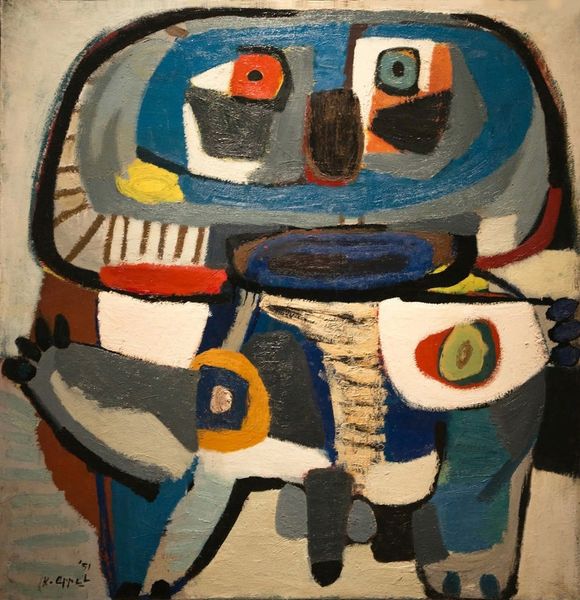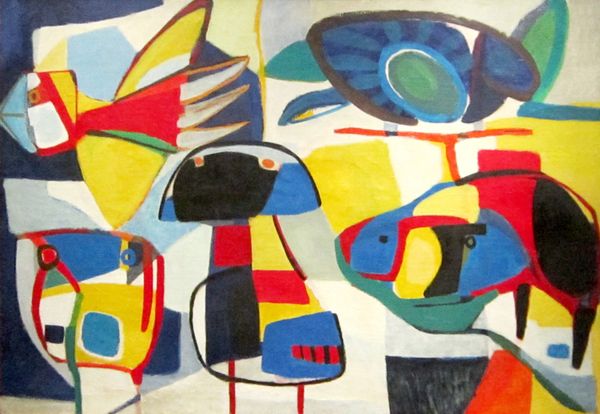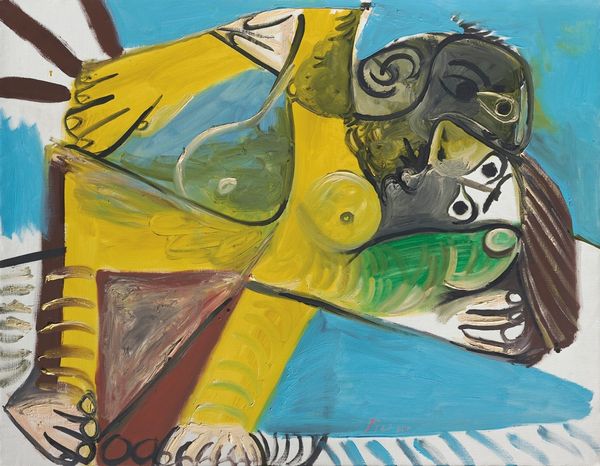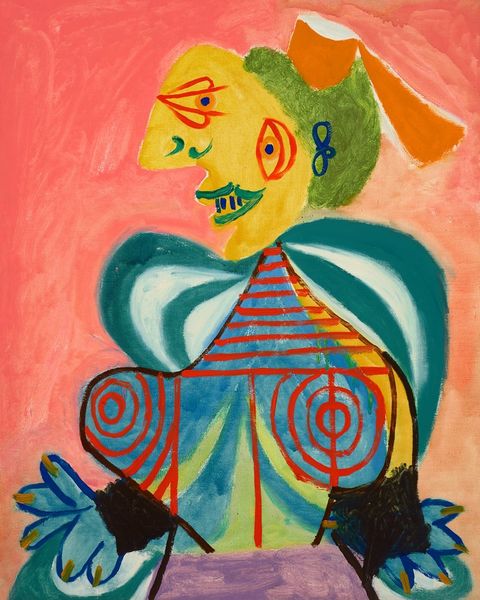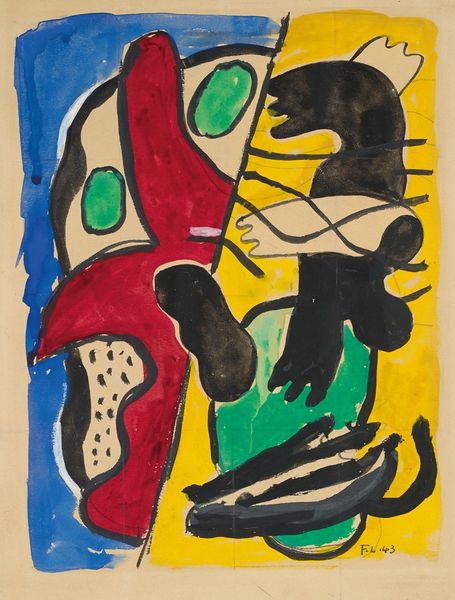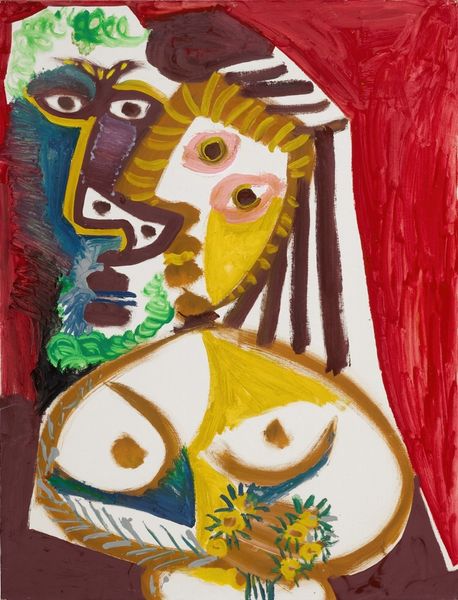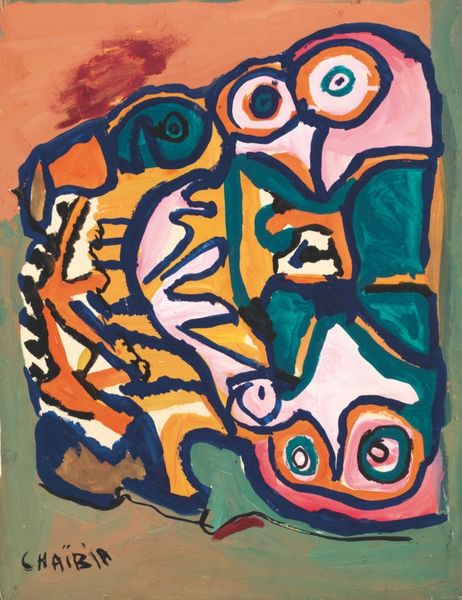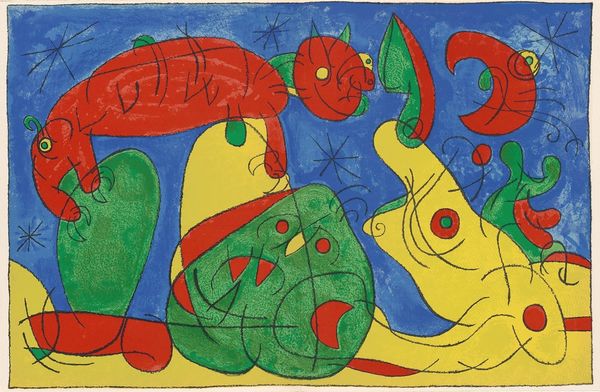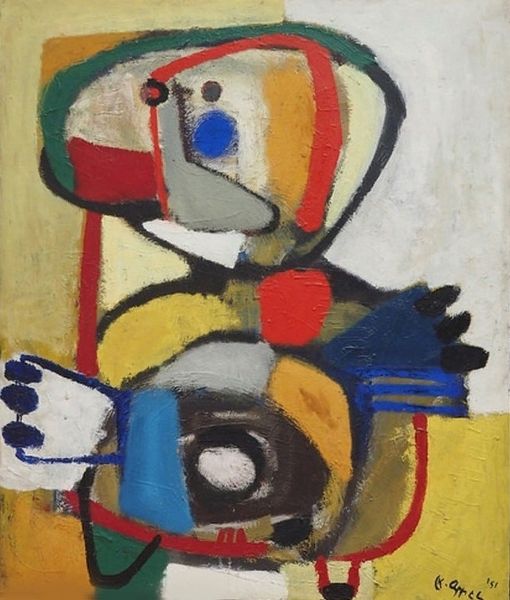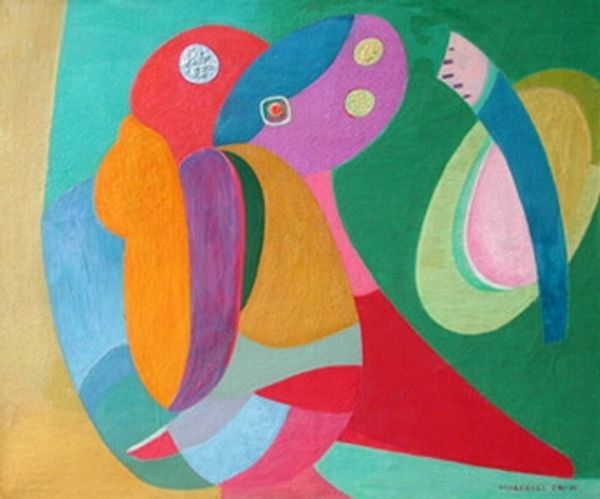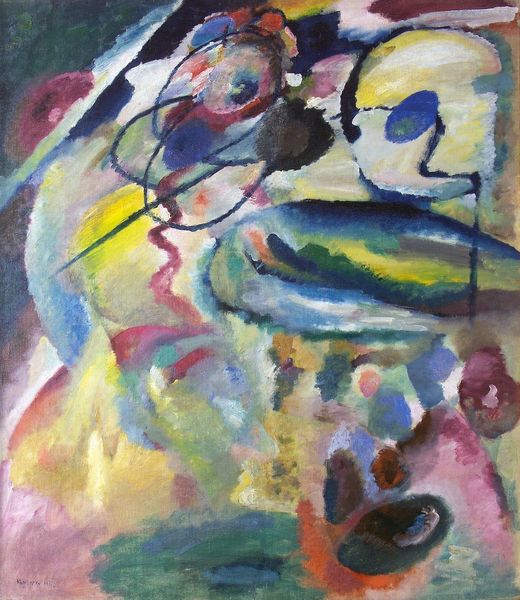
#
cobra
Copyright: Karel Appel,Fair Use
Curator: We are here looking at "1951," a vibrant painting by Karel Appel, made in the namesake year. The work presents a colorful composition that blurs the lines between figuration and abstraction. Editor: Whew, those colours! It just zaps you awake, doesn't it? Reminds me of childhood doodles mixed with... well, a very expressive nightmare about birds. In a good way, I think! Curator: Appel was a key figure in the Cobra movement, and in "1951," you see many elements typical of their practice—a rejection of academicism, embracing spontaneity, and incorporating elements of folk art and children's drawings. Editor: Ah, that explains the doodle-y feel. So it's deliberately naive, you're saying? I was half-thinking maybe the canvas just exploded with joy one day, and Appel happened to catch it. Curator: Precisely, the intention was to connect with a raw, uninhibited creative impulse. The simplified forms, bold colors, and loose brushwork reflect a post-war desire for a more liberated form of expression, also visible when considered in relation to similar experiments like Dubuffet's. These birds also speak to figuration emerging in abstract paintings. Editor: Birds! That’s what they are. I was so caught up in the colors that I almost missed that we have a couple of quirky birds going on, here. One perched precariously on top of the other, as if about to launch into some crazy avian dance-off. It’s joyous, in a chaotic sort of way, wouldn't you say? Curator: It evokes feelings of unrestrained energy and challenges traditional notions of beauty and artistic skill. We could analyze this piece from many angles and ask: How can we approach painting, not from an aesthetic position but a space of collective trauma? What does radical and childlike freedom look like within painting? Editor: And all this from a couple of brightly colored, slightly deranged-looking birds? Remarkable. Makes you want to grab a brush and throw caution, and maybe a bit of sanity, to the wind. Curator: This piece serves as a powerful statement for the rejection of convention and the affirmation of an unbridled creative vision that carries considerable historical and art historical weight. Editor: Karel Appel gave us permission to play again, to break the rules, didn't he? If this painting can speak so directly, what other treasures are waiting to be discovered if we are brave enough to look closely and to risk interpretation?
Comments
No comments
Be the first to comment and join the conversation on the ultimate creative platform.
